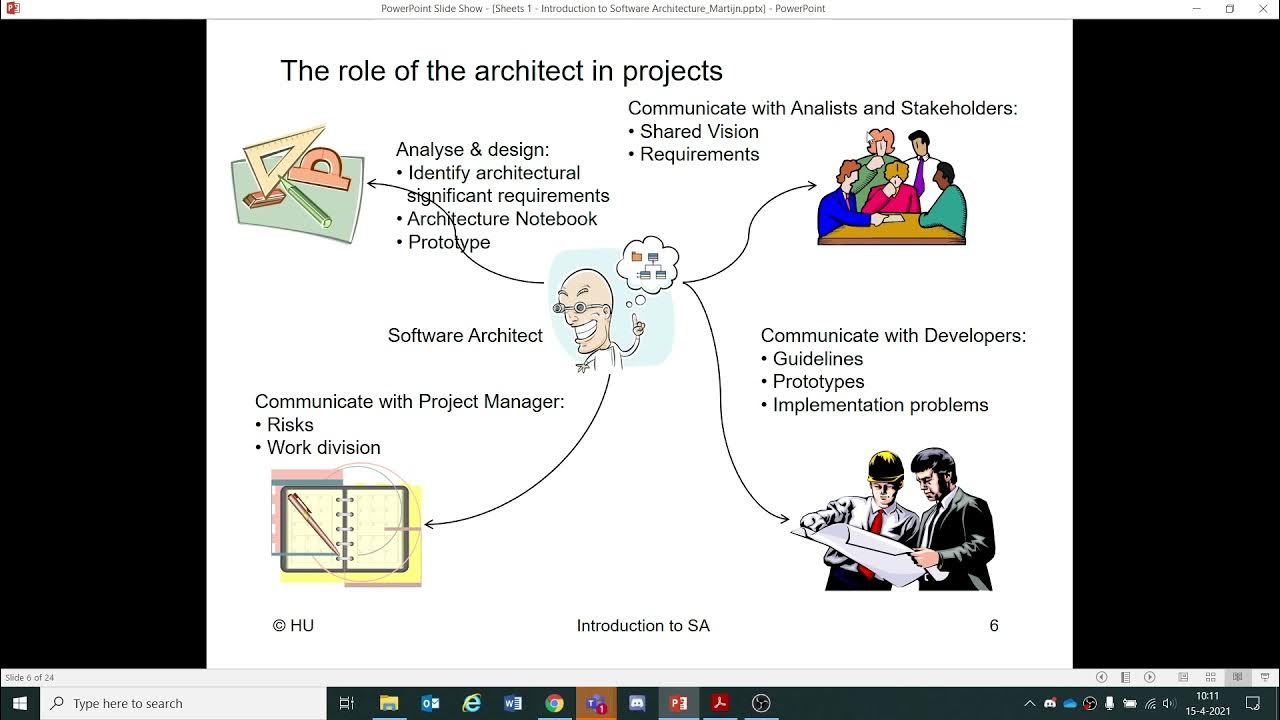Functional Requirements and Specifications: A Quick Tutorial
Summary
TLDRThe script explores the importance of functional specifications in IT projects, explaining their purpose to define software requirements. It discusses various formats like FRDs, SRSs, BRDs, Use Cases, and User Stories, emphasizing their role in aligning business and IT objectives. The speaker shares insights on creating concise documents for better alignment and provides a free use case template for effective requirement documentation.
Takeaways
- 📝 A functional specification is a document that defines the requirements to be implemented by a software solution.
- 🔍 It is created to align business needs with IT solutions, often involving business process changes, organizational changes, or configuration adjustments.
- 📚 Common formats for functional specifications include Functional Requirements Document (FRD), System Requirements Specification (SRS), and Business Requirements Document (BRD).
- 📋 Use Cases and User Stories are alternative formats that provide context and clarity to functional requirements, reducing ambiguity.
- 🤝 The functional specification serves as a bridge between business and IT stakeholders, ensuring mutual understanding and agreement on system capabilities.
- 📈 The document is crucial for confirming that the software meets the business users' needs and is feasible and implementable from a technical perspective.
- 📉 Early in a career, functional specifications might be extensive, but as a business analyst matures, the preference often shifts towards shorter, more focused documents.
- 📝 'System shall' statements in FRDs, SRSs, or BRDs outline the functionalities required but can lack context, making them harder to implement and test.
- 🔗 Use Cases provide a step-by-step guide that embeds functional requirements within user actions, aiding in clarity and reducing scope creep.
- 👤 User Stories succinctly capture user goals, functional requirements, and business benefits in a single statement, facilitating easy planning and alignment.
- 🛠 The choice of specification format should consider organizational standards and stakeholder preferences to avoid future issues.
- 🔑 Use case thinking, often paired with wireframes, is essential for uncovering detailed requirements and ensuring that no critical needs are overlooked.
Q & A
What is a functional specification in the context of an IT project?
-A functional specification is a document that defines the requirements to be implemented by the software solution in an IT project.
Why is creating a functional specification important for business analysts?
-Creating a functional specification is important to capture what the software needs to do to support a business user, ensuring alignment between business and IT stakeholders.
What are some common formats for a functional specification document?
-Common formats include the Functional Requirements Document (FRD), System Requirements Specification (SRS), Business Requirements Document (BRD), Use Cases, and User Stories.
How do business process changes relate to functional specifications?
-While not all solutions are software-based, business process changes can be part of the requirements defined in a functional specification, especially when they are supported by IT systems.
What is the purpose of the 'system shall' statements in a functional specification?
-'System shall' statements are used to represent functional requirements, typically organized in tables by feature with a priority identified.
How do use cases differ from 'system shall' statements in capturing functional requirements?
-Use cases provide a series of steps in the context of user actions, which helps eliminate ambiguity and provides context that is often missing in 'system shall' statements.
What is the syntax for capturing functional requirements in a User Story?
-The syntax for a User Story is 'As a {user}, I can {do something} so that {I receive some benefit}.' This format captures user goals, functional requirements, and business benefits.
Why might a business analyst choose a shorter scope document over a longer one?
-A shorter scope document can be more efficient to write and approve, consolidating overview sections with use cases or user stories to focus on the functional details.
What are the advantages and disadvantages of using system shall statements, use cases, and user stories?
-System shall statements are easy to track but lack context. Use cases provide context but can expand in scope. User stories are concise and link goals and benefits but may lose the big picture if used in isolation.
How can a business analyst ensure they capture the right requirements in a functional specification?
-By using use case thinking and corresponding wireframes, a business analyst can ensure they capture the right level of detail and discover requirements that might be missed otherwise.
What is the significance of the functional specification in aligning business and IT stakeholders?
-The functional specification is the document that sits in the middle, holding everything together, and ensuring that both business and technical stakeholders confirm the requirements are what is needed and feasible.
Outlines

Esta sección está disponible solo para usuarios con suscripción. Por favor, mejora tu plan para acceder a esta parte.
Mejorar ahoraMindmap

Esta sección está disponible solo para usuarios con suscripción. Por favor, mejora tu plan para acceder a esta parte.
Mejorar ahoraKeywords

Esta sección está disponible solo para usuarios con suscripción. Por favor, mejora tu plan para acceder a esta parte.
Mejorar ahoraHighlights

Esta sección está disponible solo para usuarios con suscripción. Por favor, mejora tu plan para acceder a esta parte.
Mejorar ahoraTranscripts

Esta sección está disponible solo para usuarios con suscripción. Por favor, mejora tu plan para acceder a esta parte.
Mejorar ahoraVer Más Videos Relacionados

Kebutuhan Fungsional dan Non Fungsional

SARCH20 V2C 2021 04 15 Module 1 deel 1 van 3

Introduction & How to write SRS - Software Requirements Specification Document

Functional vs Non Functional Requirement

What are Non-functional Requirements and How Do They Work?

Quick & Simple Explanation of Non-Functional Requirements and Why They matter?
5.0 / 5 (0 votes)
